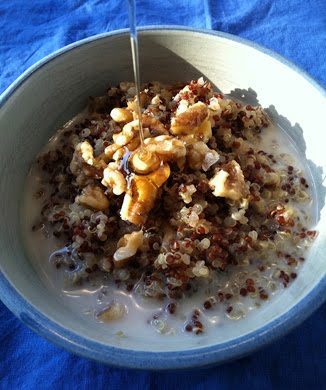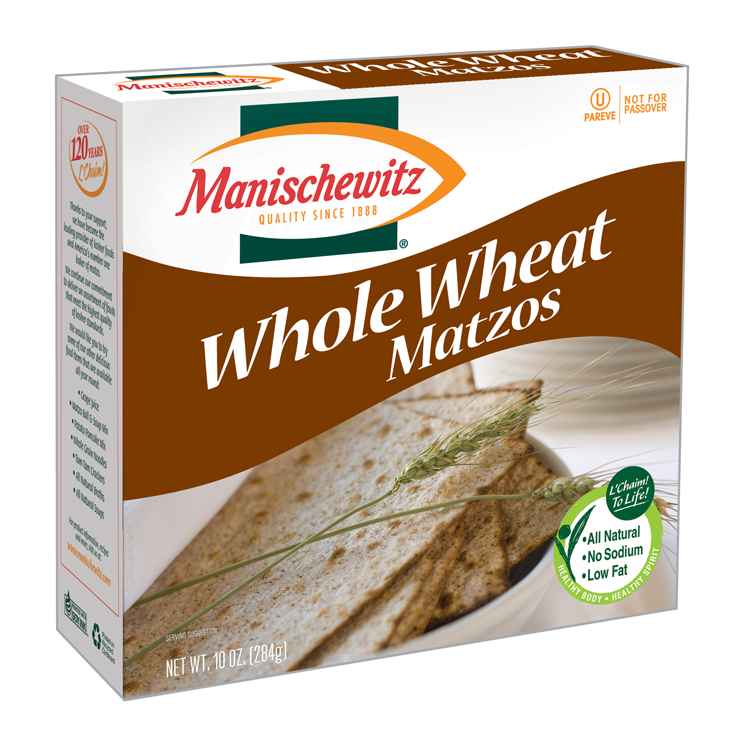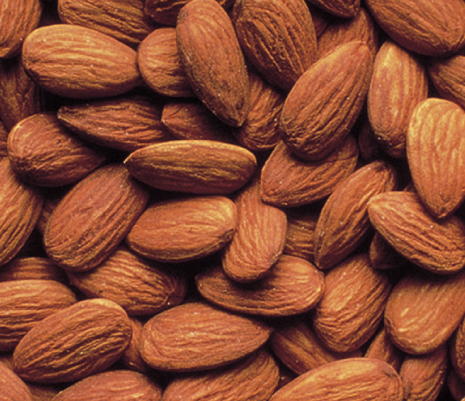
Many of you remember Amber, who had been recording her journey with us here and who helped us out with a segment for ABC-LA. Well, since that time, she has gone back to culinary school. (Go Girl!) She recently shared a report that she wrote about quinoa, and has agreed to let me post it as a guest blog. So excited to see someone with PCOS working in a place where she can have a significant impact!
This ancient grain has many nutritional properties, as it also possesses many universal uses as stated by, Daniel Fairbanks, Ph. D., a professor of plant and animal sciences at Brigham Young University.
“It has about twice the protein of regular cereal grains, fewer carbohydrates, and even a dose of healthy fats.”(D.Fairbanks)
Plus"it is considered a 'complete' protein, which means that, like meat, eggs, and dairy, it packs all of the essential amino acids your body needs
to build muscle.”(Matt Goulding Men’s Health 2007)
Despite its many qualities, until recently, the last fifteen years or so, it has not been a popularly widespread grain. “It has been cultivated in the South American Andes from around 3000 B.C.” (K. Railey) and is claimed to be a staple food, like corn, or rice. “Quinoa is not specifically a true grain, but rather a seed of the Chenopodium or sometimes called the Goosefoot plant.” (D. Johnson, S. Ward) What classifies this as a grain is its culinary use, or the cooking technique used to prepare it. “The Incas believe quinoa to be a sacred grain, planting it each year is done first by the chief with a solid gold shovel.” (K. Railey)
Quinoa grows best in cool arid climates at higher elevations. The plant grows six to eight feet in height and has several angled branches; the flower produces clusters of seeds at the end of a stalk. The greens of the plant resemble that of a goose’s foot, hence the name"goosefoot," and are edible, similar to spinach greens. The seeds or quinoa, are very small, only about a quarter of the size of one grain of rice. They vary in color they can be red, brown, white, or pink and have a nutty flavor when properly cooked.
Attempting to cook the quinoa for the first time it became clear that this little seed is relatively unique in such a way, that when cooking it, the seed’s outer casing peels outward forming into a tail shape. The grain itself is a lot like rice, but the tail creates a crunchy and unique texture. Upon further research of this super grain, I became aware that “the seed when picked has a resin like coating; called saponin” (botanical.com) that rinses off easily. This outer resin'like “coating is of use as a detergent and a topical antiseptic in South America.” (K. Railey)
“The protein in quinoa about 12% to 18% about one cup a day could provide you with the proper amount of protein daily.” (D. Fairbanks) It also contains calcium, and iron and a substantial amount of vitamin E, and several of vitamin B complex, however it does contain a 6% to 7% o fat ratio (considered healthy fats). It has lower sodium content; it contains albumen, is gluten-free and it contains eight essential amino acids. Other grains come close to containing as much protein as that of quinoa but it is only about half the protein levels.
In conclusion, in my research of quinoa, I have found that it truly lives up to its superior qualities in that it has amazing protein levels, vitamin complex, and amino acids all packed into a rather small package. I love that you can use the whole plant, not just the seed and that it possesses medicinal qualities. It has replaced rice, and flour in my home due to its many benefits, and its universal cooking techniques. Since it contains higher amounts of fat and oil, it is necessary to store quinoa, in glass jars in the refrigerator in seed form it can store for up to one year, flour about three months. This super grain can be found at local health food stores, and on – line.
Recipe courtesy of epicurious.com
Yield: Makes 4 servings
Active Time: 5 minutes
Total Time: 30 minutes
Ingredients:
1 cup quinoa (all red or a mix of red, white, or black)
1 1/2 cups water
2 cinnamon sticks
1/4 teaspoon salt
Accompaniments:
Broken or chopped walnuts, pure maple syrup or honey, milk, and flaky sea salt
Wash quinoa in several changes of water in a bowl, rubbing grains and letting them settle before pouring off water (if quinoa does not settle, drain in a large fine-mesh sieve after each rinse), until water is clear. Drain washed quinoa well in a large fine-mesh sieve. Combine all
ingredients in a heavy medium saucepan and bring to a boil, covered. Reduce heat to low and cook, covered, until water is absorbed and quinoa is tender, about 20 minutes. Remove pan from heat and let stand, covered, 5 minutes. Fluff with a fork and keep covered to keep warm. Remove
cinnamon sticks. Divide quinoa among bowls and top with walnuts, maple syrup or honey, milk, and sea salt.
Bibliography
http://www.botanical.com/botanical/mgmh/c/chenop53.html. (2012, March 7). Retrieved March 7, 2012, from http://www.botanical.com: http://www.botanical.com/botanical/mgmh/c/chenop53.html
http://www.menshealth.com. (2012, March 6). Retrieved March 6, 2012, from http://www.menshealth.com: http://www.menshealth.com/nutrition/quinoa
Johnson, Duane L. and Ward, Sarah M."Quinoa". (2012, March 7). http://www.hort.perdue.edu/newcrop/proceedings1993/v2-222.html. Retrieved March 7, 2012, from http://www.hort.perdue.edu:
http://www.hort.perdue.edu/newcrop/proceedings1993/v2-222.html
Railey, K. (2012, March 8). http://www.chetday.com. Retrieved March 2, 2012, from http://www.chetday.com: http://www.chetday.com/quinoa.html
www.epicurious.com. (2012, March 7). Retrieved March 7, 2012, from www.epicurious.com: http://www.epicurious.com:80/recipes/food/Cinnamon-Scented-Breakfast-Quinoa































